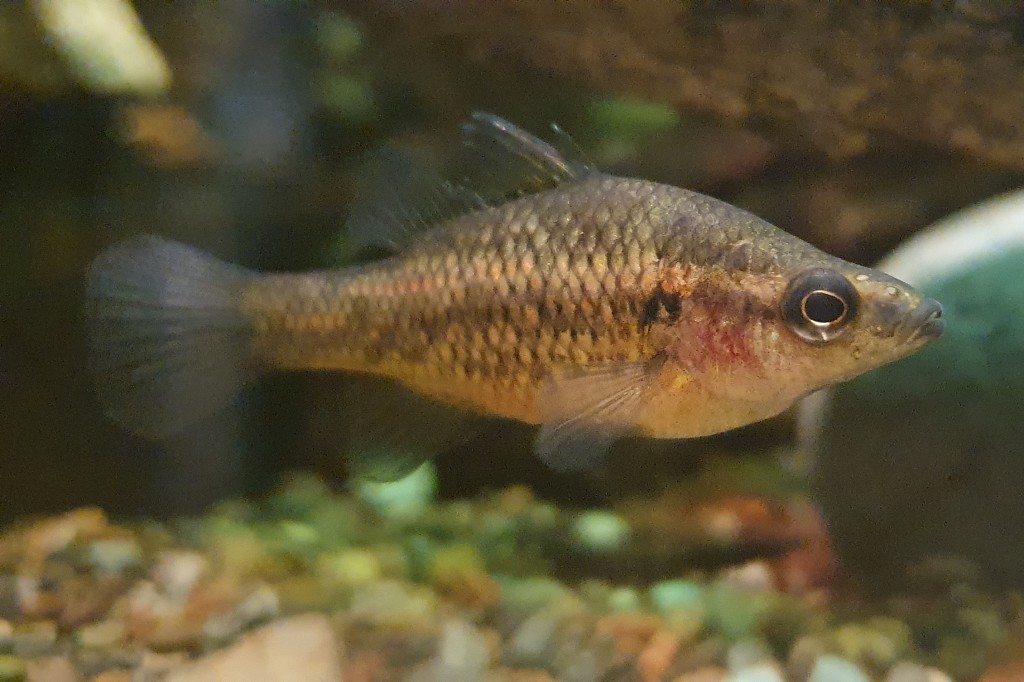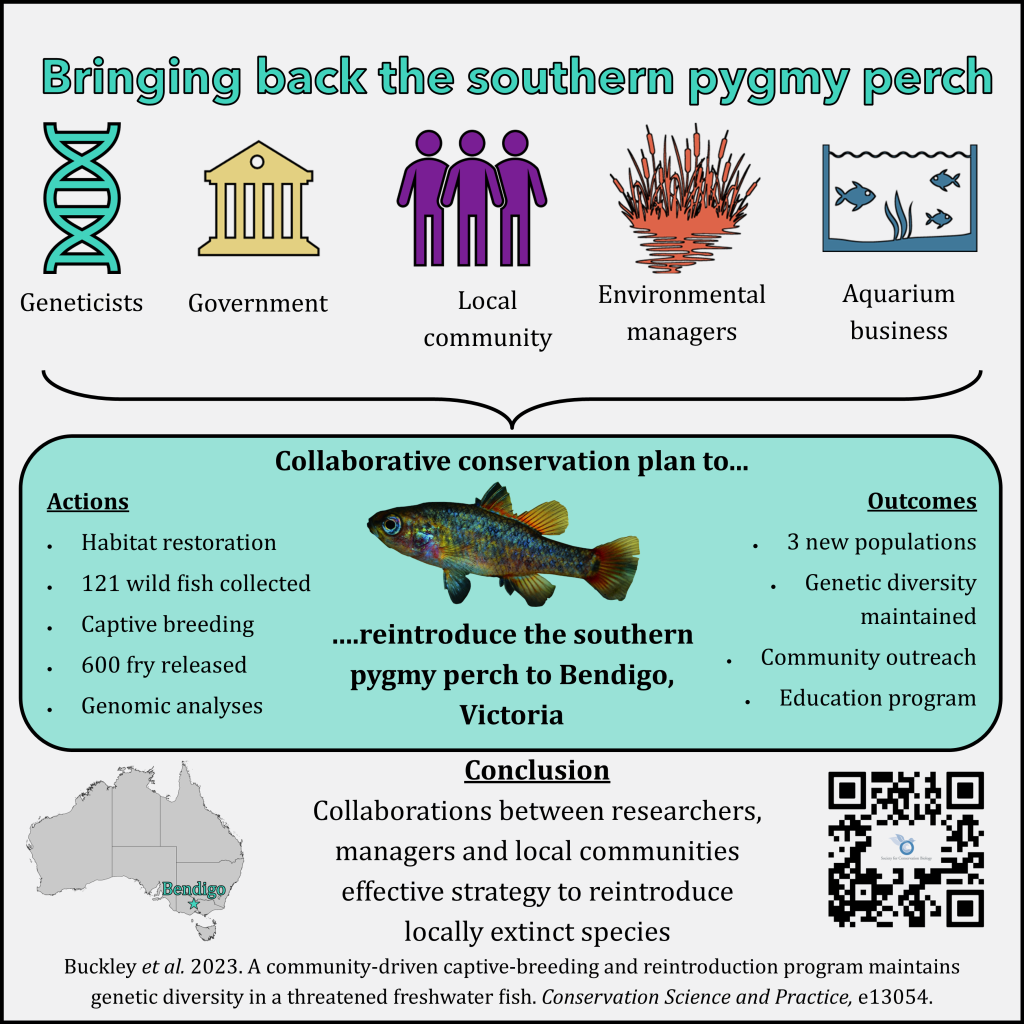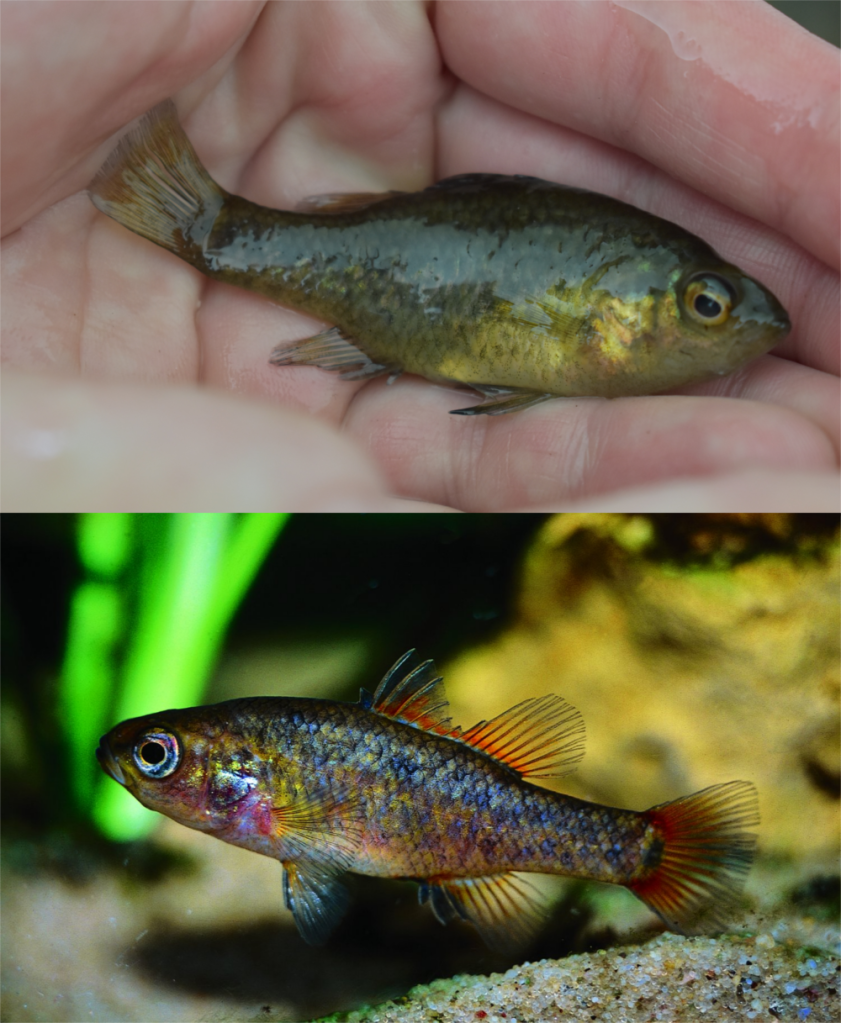Long-term climatic stability drives accumulation and maintenance of divergent lineages in a temperate biodiversity hotspot
Sean James Buckley, Chris J. Brauer, Peter J. Unmack, Michael P. Hammer, Mark Adams, Stephen J. Beatty, David L. Morgan, Luciano B. Beheregaray
Submitted: pre-print available on bioRxiv.

Anthropogenic climate change is forecast to drive regional climate disruption and instability across the globe. This issue is likely to be exacerbated within biodiversity hotspots, both due to the greater potential for species loss but also to the possibility that endemic lineages might not have experienced significant climatic variation in the past, limiting their evolutionary potential to respond to rapid climate change. We assessed the role of climatic stability on the accumulation and persistence of lineages in an obligate freshwater fish group endemic to a biodiversity hotspot. We sampled 33 individuals from nine populations spanning the range of both study taxa to explore their phylogeographic history. Using a combination of genomic (ddRAD-seq) and environmental approaches, we investigated population divergence and phylogenetic relationships, delimited species and estimated changes in species distributions since the Pliocene. We identified two deep phylogroups comprising three divergent clusters, which showed no historical connectivity since the Pliocene. We conservatively suggest these represent three isolated species with additional intraspecific structure within one widespread species. All lineages showed long-term patterns of isolation and persistence owing to climatic stability. Our results highlighted the role of climatic stability in allowing the persistence of isolated lineages in the SWWA. This biodiversity hotspot is under compounding threat from ongoing climate change and habitat modification, which may further threaten previously undetected cryptic diversity across the region.
A community-driven captive-breeding and reintroduction program maintains genetic diversity in a threatened freshwater fish

Sean James Buckley, Chris Brauer, Chris Lamin, Peter Rose, Diana-Elena Vornicu, Luciano B Beheregaray
Published in Conservation Science and Practice, 2024, 6(1): e13054.
Collaborative approaches to conservation management are critical to respond to the ongoing biodiversity crisis. However, local community involvement in many conservation actions is lacking, especially within translocation and reintroduction programs. Similarly, rapid integration of genetic information into collaborative programs with local communities is rarely conducted. Here, we describe a community-based and collaborative reintroduction program for a threatened Australian freshwater fish, the southern pygmy perch (Nannoperca australis). We integrate on-the-ground translocation efforts by volunteers from local communities, captive breeding by a private aquarium business, and genetic analyses done by a research institution to provide a holistic framework for the reintroduction of southern pygmy perch. We evaluated genetic diversity, population structure, relatedness, and inbreeding across the duration of the reintroduction program using data from neutral and adaptive genomic markers. This allowed us to assess the ability of such a program to minimize inbreeding and retain genomic variation, and to promote adaptive potential of the reintroduced population. While genetic variation for the source populations was very low, we found no decrease in genetic diversity or increase in inbreeding across the program. These genetic findings support the efforts made by local communities and will further inform future reintroductions as part of a collaborative conservation framework. We expand on our empirical case study by describing a theoretical framework for integrating conservation genomics research with community-led conservation management programs and identifying the benefits of such a collaboration. Our study highlights the importance of multifaceted and integrated conservation management approaches to effectively protect and manage threatened species.
Variation in intraspecific demography drives localised concordance but species-wide discordance in responses to past climatic change
Sean James Buckley, Chris Brauer, Peter Unmack, Michael Hammer, Luciano B. Beheregaray

Understanding how species biology may facilitate resilience to climate change remains a critical factor in detecting and protecting species at risk of extinction. Many studies have focused on the role of particular ecological traits in driving species responses, but less so on demographic history and levels of standing genetic variation. We used environmental and genomic datasets to reconstruct the phylogeographic histories of two ecologically similar and largely co-distributed freshwater fishes to assess the degree of concordance in their responses to Plio-Pleistocene climatic changes. Although several co-occurring populations demonstrated concordant demographic histories, idiosyncratic population size changes were found at the range edges of the more spatially restricted species. Discordant responses between species were associated with low standing genetic variation in peripheral populations. This might have hindered adaptive potential, as documented in recent population declines and extinctions of the two species. Our results highlight both the role of spatial scale in the degree of concordance in species responses to climate change, and the importance of standing genetic variation in facilitating range shifts. Even when ecological traits are similar between species, long-term genetic diversity and historical population demography may lead to discordant responses to ongoing and future climate change.
The roles of aridification and sea level changes in the diversification and persistence of freshwater fish lineages
Sean James Buckley, Chris Brauer, Peter Unmack, Michael Hammer, Luciano B. Beheregaray
Abstract: While the influence of Pleistocene climatic changes on divergence and speciation has been well-documented across the globe, complex spatial interactions between hydrology and eustatics over longer timeframes may also determine species evolutionary trajectories. Within the Australian continent, glacial cycles were not associated with changes in ice cover and instead largely resulted in fluctuations from moist to arid conditions across the landscape. Here, we investigate the role of hydrological and coastal topographic changes brought about by Plio-Pleistocene climatic changes on the biogeographic history of a small Australian freshwater fish, the southern pygmy perch Nannoperca australis. Using 7,958 ddRAD-seq (double digest restriction-site associated DNA) loci and 45,104 filtered SNPs, we combined phylogenetic, coalescent and species distribution analyses to investigate the various roles of aridification, sea level and tectonics and associated biogeographic changes across southeast Australia. Sea-level changes since the Pliocene and reduction or disappearance of large waterbodies throughout the Pleistocene were determining factors in strong divergence across the clade, including the initial formation and maintenance of a cryptic species, N. ‘flindersi’. Isolated climatic refugia and fragmentation due to lack of connected waterways maintained the identity and divergence of inter- and intraspecific lineages. Our historical findings suggest that predicted increases in aridification and sea level due to anthropogenic climate change might result in markedly different demographic impacts, both spatially and across different landscape types.
Phylogenomic history of enigmatic pygmy perches: Implications for biogeography, taxonomy and conservation
Sean J. Buckley, Fabricius M. C. B. Domingos, Catherine R. M. Attard, Chris J. Brauer, Jonathan Sandoval-Castillo, Ryan Lodge, Peter J. Unmack, Luciano B. Beheregaray
Published in Royal Society Open Science, 2018, 5(6): 172125.
Abstract: Pygmy perches (Percichthyidae) are a group of poorly dispersing freshwater fishes that have a puzzling biogeographic disjunction across southern Australia. Current understanding of pygmy perch phylogenetic relationships suggests past east–west migrations across a vast expanse of now arid habitat in central southern Australia, a region lacking contemporary rivers. Pygmy perches also represent a threatened group with confusing taxonomy and potentially cryptic species diversity. Here, we present the first study of the evolutionary history of pygmy perches based on genome-wide information. Data from 13 991 ddRAD loci and a concatenated sequence of 1 075 734 bp were generated for all currently described and potentially cryptic species. Phylogenetic relationships, biogeographic history and cryptic diversification were inferred using a framework that combines phylogenomics, species delimitation and estimation of divergence times. The genome-wide phylogeny clarified the biogeographic history of pygmy perches, demonstrating multiple east–west events of divergence within the group across the Australian continent. These results also resolved discordance between nuclear and mitochondrial data from a previous study. In addition, we propose three cryptic species within a southwestern species complex. The finding of potentially new species demonstrates that pygmy perches may be even more susceptible to ecological and demographic threats than previously thought. Our results have substantial implications for improving conservation legislation of pygmy perch lineages, especially in southwestern Western Australia.


